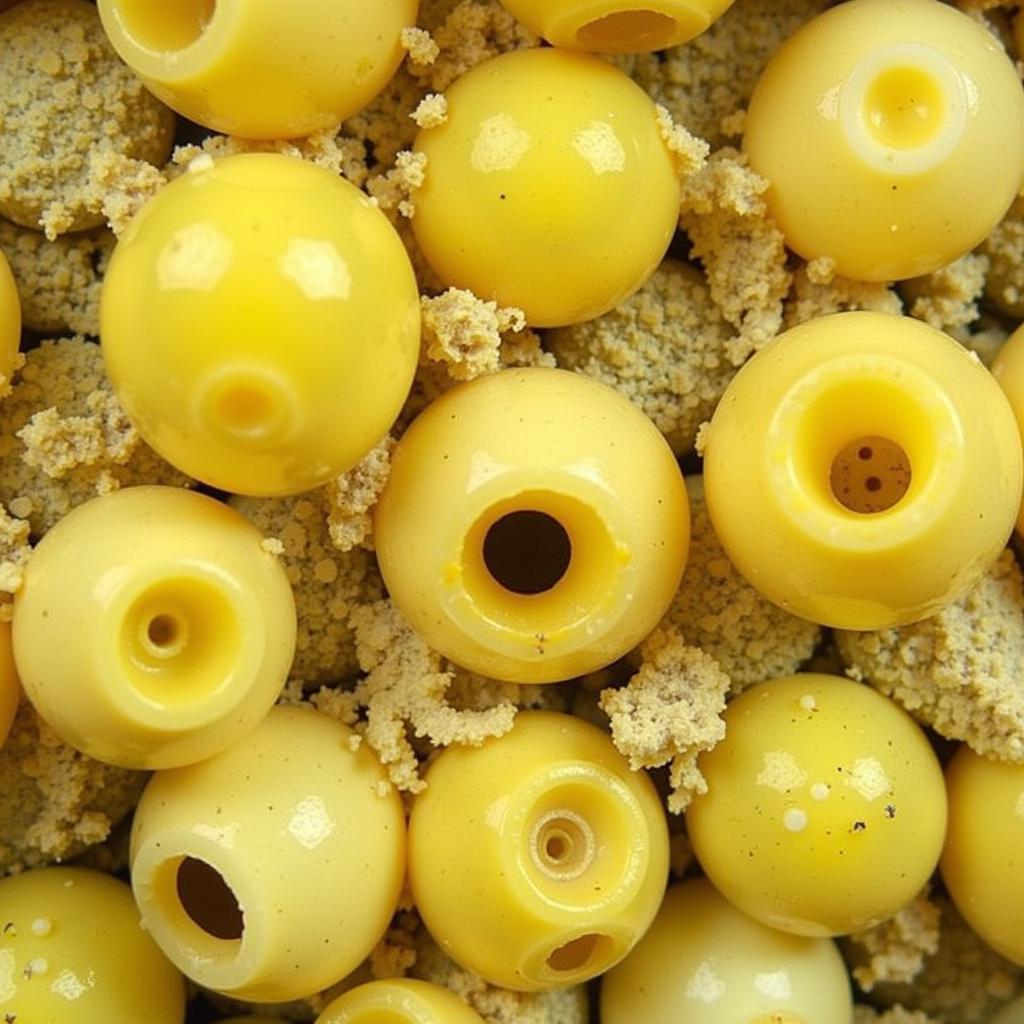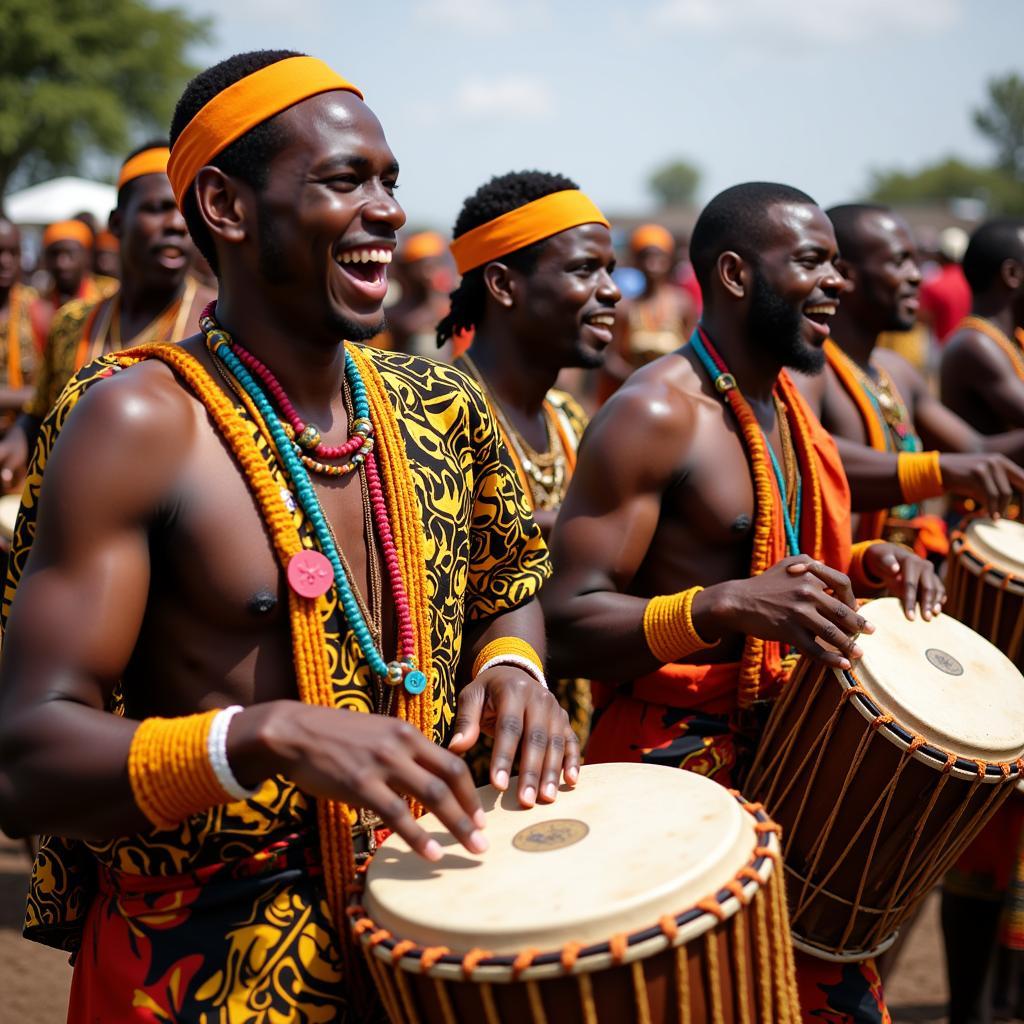Exploring the Vibrant World of African Art & Craft
African art and craft represent a rich tapestry of cultural expression, showcasing the continent’s diverse heritage and artistic ingenuity. From intricate beadwork to powerful sculptures, these creations offer a glimpse into the heart and soul of Africa’s many communities.  African Mask Carving Workshop in Progress
African Mask Carving Workshop in Progress
The Significance of African Art & Craft
African art and craft are more than just decorative objects; they are imbued with deep cultural meaning and often serve important social and spiritual functions. They tell stories, preserve traditions, and reflect the beliefs and values of the people who create them. For example, masks are often used in ceremonies and rituals, representing spirits, ancestors, or mythological figures. african beads craft descriptions descriptions have cultural significance too. Similarly, textiles woven with intricate patterns may convey messages about status, identity, or history.
Diverse Materials and Techniques
African artists and craftspeople utilize a wide range of materials, reflecting the natural resources available in their respective regions. Wood, clay, metal, fibers, and beads are just some of the common materials used. The techniques employed are equally diverse, passed down through generations and often specific to particular communities or ethnic groups. These skills, honed over centuries, result in works of art that are both beautiful and technically impressive.
What materials are used in African art? Common materials include wood, clay, metal, fibers, beads, and natural dyes.
Exploring Different Forms of African Art & Craft
From the bold lines of Ndebele house painting in South Africa to the intricate bronze castings of Benin, the continent boasts a vast array of artistic traditions. Each region has its own unique style and specialties, contributing to the overall richness and diversity of African art and craft.
Textiles and Weaving
Textiles play a vital role in many African cultures, often carrying symbolic meanings and used for ceremonial purposes. african doll craft are also a popular craft. Techniques like kente weaving in Ghana and mud cloth making in Mali produce stunning fabrics that are both functional and aesthetically captivating.
Sculpture and Woodcarving
African sculpture is renowned for its expressive power and symbolic depth. From stylized human figures to animal representations, these works of art often embody spiritual or ancestral connections. african elephant craft is a great example of this tradition. Woodcarving, in particular, is a prominent art form, with skilled artisans creating intricate masks, statues, and other objects.
“African art is not merely about aesthetics; it’s about storytelling, preserving heritage, and connecting with the spiritual realm,” says Dr. Anika Nkosi, a renowned expert in African art history.
The Impact of Globalization on African Art & Craft
Globalization has brought both challenges and opportunities for African artists and craftspeople. While it has opened up new markets and increased exposure to global audiences, it has also led to concerns about cultural appropriation and the exploitation of traditional skills. It’s important to ensure that African artisans are fairly compensated for their work and that their cultural heritage is respected. african knife makers are especially vulnerable to exploitation.
Preserving Tradition in a Modern World
Despite the challenges, many African artists are finding innovative ways to preserve their traditions while also adapting to the demands of a global market. They are experimenting with new materials and techniques, collaborating with international designers, and using online platforms to reach wider audiences. “The future of African art lies in balancing tradition with innovation,” adds Dr. Nkosi. “By embracing new technologies and collaborating with global partners, African artists can share their rich cultural heritage with the world while also ensuring its preservation for future generations.”
The Enduring Legacy of African Art & Craft
African art and craft continue to captivate and inspire people around the world. From museum collections to contemporary art galleries, these creations offer a powerful testament to the creativity, resilience, and cultural richness of the African continent. african artisans handcrafts are increasingly sought after by collectors and enthusiasts worldwide. By supporting African artists and learning more about their work, we can contribute to the preservation of these valuable traditions and help ensure that their stories continue to be told for generations to come.
Conclusion: African art and craft offer a unique window into the diverse cultures and artistic traditions of the continent. From intricate beadwork to powerful sculptures, these creations tell stories, preserve heritage, and connect us to a rich and vibrant past. By appreciating and supporting African art and craft, we can help ensure that these traditions continue to thrive for future generations.
FAQ:
- What is the significance of masks in African art?
- What are some common materials used in African crafts?
- How has globalization impacted African art and craft?
- What are some examples of traditional African weaving techniques?
- Where can I find authentic African art and craft?
- How can I support African artists and craftspeople?
- What are some ethical considerations when purchasing African art?
For further assistance, please contact us at Phone: +255768904061, Email: [email protected] or visit us at Mbarali DC Mawindi, Kangaga, Tanzania. We have a 24/7 customer service team.



